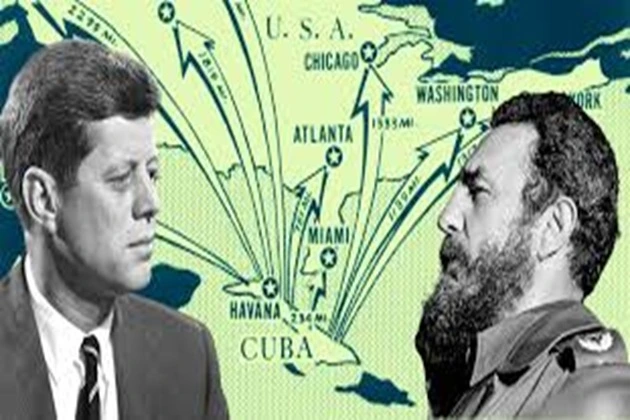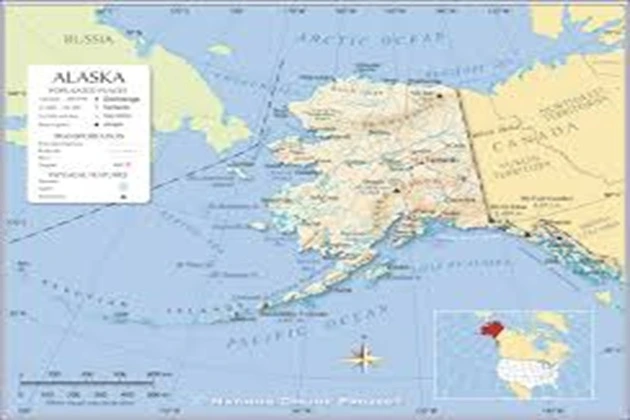All countries’ military always hatches plans to attack or repel aggression from a suspected enemy. Usually, their fantasies are limited not by morality or notions of humanity but by the level of funding and influence on the political elite. For this reason, the most incredible projects originated in the United States during the Cold War. Some documents have already been declassified, while others are kept in the archives as “top secret.”
5 Recently declassified US military operations around the world
1. Operation Northwoods

In 1962, the US Department of Defense was developing a strategy to prepare public opinion before the proposed invasion of Cuba. Despite the disparate military might, the overthrow of Fidel Castro required a real reason—something more than his commitment to communist ideas. In addition, the unpopular Vietnam War was already underway about 10,000 kilometers from Washington. It was necessary to develop something, and military experts, PR specialists, and analysts used all their creativity.
The documentation on Operation Northwoods was declassified in 1997. The information contained here is more like headlines from the tabloid press. With one exception, these were plans that were being developed in earnest. For example, special forces units were supposed to carry out sabotage at the American military base in Guantanamo. However, this is the most harmless thing.
The scenario of organizing terrorist attacks in Miami and other cities of Florida was being worked out with the provision of irrefutable evidence of the involvement of Cubans. Top military officials were even ready to launch an attack on their ship using an F-86, repainted to look like a Cuban (Soviet) MiG. After reviewing the proposals, John F. Kennedy immediately rejected the draft and dismissed the Minister of Defense. A year later, the 35th President of the United States will be shot.
2. Operation Paul Bunyan
Paul Bunyan is a giant lumberjack, a character in American folklore. It took five storks at once to deliver the newborn to the house. When the baby grew up, his handclaps knocked out windows and doors. He roamed everywhere with a giant axe and could knock down a centuries-old sequoia tree with just one blow.
On August 18, 1976, a clash took place in the border area between the DPRK and the Republic of Korea. American and South Korean soldiers decided to cut down a poplar tree. Branches obstructed the view between the observation posts. Visit. A F R I N I K . C O M . For the full article. Soon, North Korean soldiers appeared, armed with axes and batons. They demanded that the work be stopped immediately because this tree was planted personally by Kim Il Sung. A fight broke out: two Americans were killed, and nine more people were seriously injured.
Three days later, the poplar-cutting operation resumed. This time, an engineering platoon and a special forces company acted as lumberjacks. From the air, aviation demonstratively supported them. There was no clash, and the tree was cut down without loss. The special operation lasted 42 minutes.
3. Operation “Eldest Son”
During the Vietnam War, the Northerners were heavily dependent on the Allies. Most of the ammunition was supplied by China, after which relatively small shipments were delivered along forest trails to specific units. Some of the cargo was inevitably intercepted by the enemy or lost in the endless jungle. American experts have figured out how to use 7.62 mm cartridges. They were not suitable for the weapons of the South Vietnamese army, but they were still not useless.
The captured cartridges were disassembled, and the smokeless powder was replaced with an explosive substance and put back into the boxes. Then, it was necessary to throw these ammunition to the soldiers of the North Vietnamese army. Sometimes, a cache found earlier was specially saved for this purpose, and enemy scouts were allowed to pick up much-needed cargo. They also resorted to staging a clash on one of the roads, where, in addition to the broken equipment, there was an accidentally surviving truck with sealed boxes of ammunition.
It is not known how many Vietnamese soldiers were killed or injured as a result of such sabotage. Still, the calculation was initially not for physical damage but for psychological pressure. It becomes much more difficult to fight if a soldier doubts the reliability of his weapon. In addition, there were rumors that China was intentionally supplying low-quality cartridges.
4. The Alaska Project
In the early 1950s, the world followed the growing contradictions between the USSR and the USA. The Cold War began, and the general staff of the two superpowers focused on finding the most likely points of contact. Naturally, Europe, to be more precise, Berlin, was the priority target. However, the American command was also concerned about the situation in Alaska. In the event of a rapid and large-scale Soviet offensive, military and political control of the state could be lost.
The FBI and the CIA began preparing the ground for the guerrilla movement. Loyal and patriotic Alaskans were chosen to participate in the project. Lumberjacks, fishermen, and hunters were considered the most priority candidates. These people knew the wild and rugged terrain, had specific survival skills, and almost always knew how to use weapons.
Hundreds of caches of supplies, radio communication stations, medicines, and explosives have been set up throughout Alaska. At its peak, the secret network included thousands of potential partisans who did not even know each other personally. The hot phase of the war did not occur, and there was no invasion of Alaska. However, judging by the declassified documents, the last caches were eliminated only in the early 2000s.
5. The Iceworm Project
The large-scale project envisaged the creation of a network of tunnels under the Greenland ice sheet, about 4,000 kilometers long, where up to 600 intercontinental ballistic missiles could be located. You probably understand who the alleged opponent was. The most active work was carried out from 1960 to 1963. At that time, 200 people permanently resided at the base. Barracks, a church, a shop, and leisure facilities were under the ice.
The world’s first portable nuclear reactor, Alco PM-2A, generated electricity while water was extracted from the glacier. A critical error in the calculations was soon discovered. It turned out that the ice moves much more intensively. Any object built under the ice sheet collapses in just a few years. This discovery was the reason for the refusal to make the base. The remains of the structures, as well as the radioactive elements, were abandoned on the spot.
It was believed that permafrost would bury them forever. The latest data from climatologists is less optimistic. There is a high probability that by the end of the 21st century, the Greenland ice sheet will begin to melt. In this case, chemical and biological waste can enter the environment.
